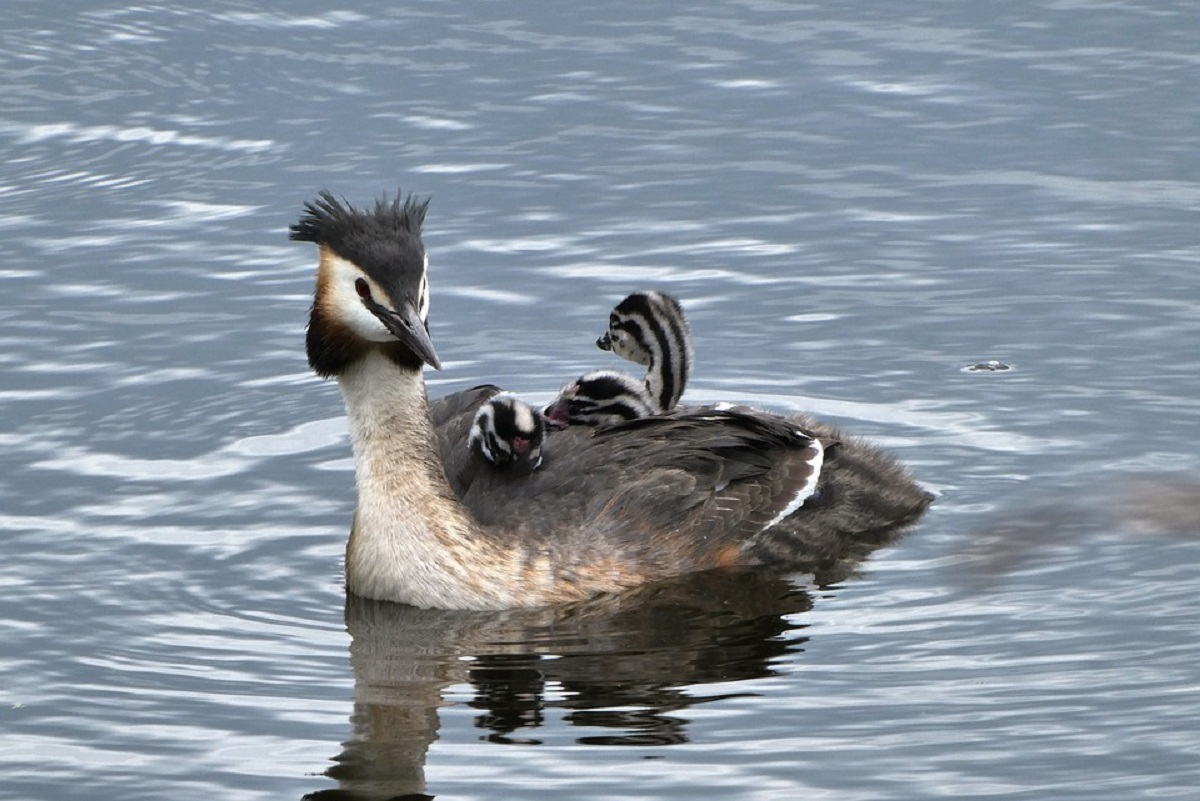Parental care has forced St Petersburg great crested grebes to lay eggs with an eye on seagulls

Ornithologists from St Petersburg University, Elmira Zaynagutdinova and Yuriy Mikhailov, studied the features of the great crested grebes (Podiceps cristatus) nesting in the nature reserve ‘North Coast of the Neva Bay’. It turned out that some birds have learned to change the time of egg incubation in order to breed along with black-headed gulls and black terns. This strategy makes it possible for them to use the ‘protection services’ of neighbouring birds. The findings of their research are published in Biological Communications.
As a rule, the great crested grebes nesting in the shallow waters of the Neva Bay choose one of two scenarios for breeding. They build their nests either in reed beds where it is rather difficult for predators to sneak, or in more dangerous places in open water. In the latter case, the birds have to somehow protect their eggs from enemies – mostly from hooded crows, which are ready to destroy the nest at the first opportunity. This is why great crested grebes often settle along with more aggressive patrons – for example, black-headed gulls or black terns.
‘As a result, great crested grebes begin to nest in the vicinity of the larid colony much earlier than in reed beds. Incubation of all three species in the two neighbouring colonies being studied started on the same date – 27 May. This made it possible for the great crested grebes to nest under the protection of the other birds, and therefore to protect their nests from predators as effectively as in the reed bed,’ said Elmira Zaynagutdinova, PhD, an author of the research.
As the researchers note, the great crested grebes from the open water colonies made a ‘false start’ about five days earlier than the ones who had chosen reed beds. Each year, the exact dates of the great crested grebes nesting in the Neva Bay vary depending on the weather, but they fall roughly between 20 May and 15 June. At present, these cute birds with black crests and red collars can be found in ponds and lakes almost throughout Eurasia, Australia and New Zealand, and even in some places in Africa. Yuriy Mikhailov is a PhD student of St Petersburg University and the co-author of the research. He noted that the structure of their nests is also of particular interest.
‘They build floating structures, so it is not so important for them to have an overgrown shore nearby,’ noted the ornithologist Yuriy Mikhailov. ‘A great crested grebe’s nest usually consists of an old reed, typha and sometimes lily leaves. It is located where there is a water body with sufficient depth – from where it is convenient to immediately dive into the water and hunt for fish.’
The scientific article about great crested grebes was included in the latest issue of the journal ‘Biological Communications’, where you can also read the latest research into: locomotion of vespertilionid bats; how the musculature of worms is arranged; why some sea sponges are toxic; how much zinc affects soil; and much more.
‘The published issue of our journal is significant and important – this is the first issue after the entry of Biological Communications into the international abstract and citation database Scopus,’ said Pavel Skutschas, Editor-in-Chief, Associate Professor of St Petersburg University, Doctor of Biology. ‘It turned out to be biologically versatile and fully corresponds to its title. I hope we will be able to preserve the diversity of topics in the future, as well as make ‘Biological Communications’ attractive to an even wider circle of researchers specialising in all areas of modern biology.’
Biological Communications is a rebranded new title of the former journal ‘Vestnik of Saint Petersburg University. Series 3. Biology’, which has been published since 1946. In May 2017, it was turned into a multi-discipline English-language journal in the field of biological sciences. Its main purpose is to inform readers, primarily from other countries, about the best achievements of Russian biology. The editorial board of the journal includes researchers from around the world: from Russia, the USA, Germany, Great Britain, Poland, Italy and other countries.

